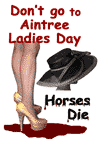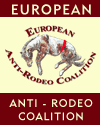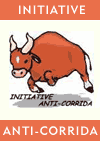BLOOD FIESTAS FAQs
Q: How many Blood Fiestas are there?
A: At least 10,000 but possibly up to 20,000 or more.
The villages are supposed to obtain a license to hold a Blood Fiesta. This is to ensure that various crowd safety rules are complied with or that the village has sufficient accident insurance etc. and this all costs money. Therefore there are many unlicensed fiestas.
Consequently it is impossible to get an accurate figure and all our figures have to be guestimates. The conservative figure of 15,000 has been quoted in the Spanish national press but it has also been quoted that that there are 2,000 fire bulls in the Province of Valencia alone.
Q: When do they take place?
A: Throughout the year, almost every month has it's share of fiestas, peaking in late summer.
Q: Where do they take place?
A: In most regions of Spain.
Catalonia is the most progressive region of Spain having passed an animal law in 1988 which has prohibited the worst excesses of Blood Fiestas in their region. A ban on bullfighting was voted in on 28/7/2010 to take effect on the 1/1/2012. Unfortunately a number of bull Blood Fiestas continue in Catalonia.
Galicia and Asturias are not in the main blood fiesta country either. Bullfighting and bull fiestas have been banned in the Canary Islands, although cock fighting is legal and very popular there.
Q: What types of animals are used in Blood Fiestas?
A: The real victims of Blood Fiestas are cattle. More than 27,000 bulls, cows or calves, some as young as a few weeks die annually. In addition to the 8,000 bulls (approximately) that die in the bullring.
These animals are the surplus of the bullfighting industry, sold off for various reasons such as: no use for breeding, slightly deformed or impaired, (i.e. blind in one eye, lame, badly shaped horns), too young, too old, or in the cases of many of the bulls, too big, too brave, or too unpredictable for the matador.
Also depending on the type of fiesta pigs, pigeons, squirrels and geese are used. Since 2003 due to the fact that animal protection laws have been introduced in every region of Spain, there has been a ban on all chicken fiestas.
There are some fiestas with goats and an odd one or two with donkeys.
Q: How do the villages get hold of cattle. Who pays for them and to whom do they pay the money?
A: When the village organises it's fiesta, they contact or are contacted by the breeders of fighting bulls. The Ayuntamiento (town hall) pays for most of the animals from public monies, which often include subsidies from regional and national funds. In some instances the bulls, cows or calves are paid for by local Peñas (supporter’s) Clubs.
The animals fetch a grossly inflated price as Brava cattle, selling for 3 or 4 thousand pounds per animal. A village of 4,000 inhabitants may easily spend £50,000 of public money on a week's blood fiesta.
It is also common for a Mayor to receive a 'kickback', from the breeder for putting the business his way.
This is very lucrative side-line for the bull breeders and it is why they have mercilessly pushed these ideas onto the villages, the breeders brag that there is more money in fiestas than in bullfighting.
Q: What happens to the animals in the Blood Fiestas?
A: Chickens were hung by their feet from a rope, and decapitated by either a sword, often blunted to make it more 'fun', or have their heads wrenched off manually.
Another variation on this was to bury the birds in a box or in the earth with just their heads sticking up, then they were beaten to death or their heads hacked off with swords.
Ducks had their wings clipped and wetre thrown into a river or the sea and dozens of swimmers troied to catch them. The birds were often pulled apart in the tug of war.
Geese are strung up by their feet and have their heads wrenched off manually.
Pigeons and squirrels are imprisoned in tiny pots suspended from a very high pole, the pots are stoned until they break and the birds and animals fall out alive or dead.
The most famous goat fiesta was that of Manganeses de la Polvorosa where a goat was thrown from a church tower. FAACE saw two goats mortally injured. If a goat survived the ordeal, it was killed and eaten afterwards. FAACE managed to bring enough pressure to obtain two Ministry of the Interior orders forbidding the fiesta, but the village defied them and the practise continued until January 2000.
The most notorious donkey fiesta is at Villanueva de la Vera where Vicki managed to get two donkeys out, the famous Blackie and another donkey Jose.
The animal used in 1986, was killed by drowning it in the village fountain.
No donkey has been killed since then, but the animal always has a terrible ordeal in the hour and a half it is on the streets.
This fiesta is under constant observation.
Pigs are greased and set loose to be caught by crowds of men, the animal is nearly always badly injured in the struggle and sometimes they are pulled and crushed so badly they literally burst.
NB. For cattle - see below
Q: What are the worst examples of these fiestas?
A: The worst of all the fiestas for cruelty are those using cows, bulls or calves.
With so many fiestas centred on cattle, it is true to say that any unimaginable horror can be done to one of these animals, and probably is.
From our own experience and witness we know that a cow, calf or bull condemned to a blood fiesta can die from stabbing, strangulation, spearing, and multiple injuries. It can be thrown down from a height, deliberately and repeatedly knocked down by a car or tractor, or drowned.
Before it dies it can suffer rape by sticks or metal spikes, live castration, have its horns, tails and ears ripped off, be blinded or burned.
It's torture can last to up to five hours.
Q: How are the cattle fiestas linked to bullfighting?
A: The major link is that all the cows, bulls and calves sold to the villages are bred by the breeders of the fighting bulls. The fiestas provide a very lucrative outlet for the 'wastage' of bullfighting stock, indeed it makes the whole business financially viable. The bullfighting law also protects the encierros, suelta vaquillas, becerrados, and all the other activities in fiestas using cattle. The most recent in this series of regulations was passed in 1992.
In addition to the obvious immediate financial return, there is another almost equally important advantage in pursuing these tactics for the breeder of fighting cattle and the bullfighting industry. Through the network of bullfighting Penas clubs in the villages, the general 'aficion' is initiated, nurtured, sustained and in some instances subtly enforced. Thus providing the continuance of the Corrida at its most grass roots level. In the long term this brings far greater remuneration into the industry than the yearly cash income for the animals and paraphernalia used in the fiestas. It ensures constant regeneration and continuance for the bullfight and associated practices, against the natural order of progress and development.
Bullfighting is the flagship of cruelty in Spain and while torturing an animal to death for entertainment is called the National fiesta, a shadow is cast on every animal.
Q: Have Blood Fiestas gone on for centuries
A: There are some preposterous claims made for the provenance of bullfighting.
In the 1980s, the then Dean of the University of Salamanca, a Dr. Ortega, addressed the Intergroup at the European Parliament. In his florid and emotional defence of the Corrida he cited a prehistoric origin, some thirty thousand years ago.
As so little is actually known of such distant prehistory, this supposition was both arrogant and laughable. However the adherents of the bullfight persist in their flamboyant imaginings.
Any ancient depiction of horned or tusked animal is liable to be claimed and described as a fighting bull. Assyrian, Egyptian, Mithraic and ancient Greek religious rites are all regarded by the chroniclers of the Corrida as the absolute antecedents. In the early 1990's Greek Academia, in a response to such claims attached as justification of a staging of bullfighting in Athens, published a stinging rebuttal.
However the bullfight industry persists with its hazy and outrageous mythology. It is interesting to note what would appear to have a very obvious similitude; the use of cattle, especially bulls in the persecutions of the Roman games is quickly passed over.
The arena, the spectators, the gladiatorial bestiarios with their training schools, the straw dummies and a not infrequent supply of the condemned to add an extra diversion, are not really claimed with any enthusiasm for the lineage of the Corrida, perhaps because of the connotations.
A form of bull hunt existed in Spain from the Middle Ages. The nobility throughout Europe enjoyed a bloody chase for their recreation. Such diversions as the bull hunts were organised occasionally to celebrate important Royal events. They were very infrequent and documentation is sparse.
The objective of spearing an unpredictable foe from the saddle played a part in maintaining the military dexterity required of a knight. The times of the Austrians in Spain saw a greater frequency and added panoply to these events which became big focal points of celebrations in the major city squares. The valiant nobles backed up not only by their henchmen, but sometimes a squadron of infantry. The odds against the bull, then as now, totally stacked.
As the interests of the aristocracy changed and the House of Habsburg was succeeded by that of Bourbon, the spearing and knifing of bulls and cows was no longer considered a suitable diversion. In the 18th century, the populace took interest in a changed form of bull tormenting and killing, this was practiced in the main on foot and was the true ancestor of the modern corrida. Developed greatly in the slaughterhouses of Andalucia and spread through the towns and villages, it created the first professional toreros.
Tauromaquia as practiced in the village fiestas has within it many of the elements of the earlier years, although subject to much change. Some of the festivals have an early provenance, events such as the Fiesta of San Juan, that takes place on 24th June in Coria, where 14 bulls are tortured with darts then killed during the fiesta week, certainly has a provenance centuries old, but it is not an unbroken tradition, being revived in the early 198's after years of being virtually forgotten, the darts, which were stopped in 2009, were a recent development too.
Tordesillas, where bulls are speared to death in September, originated in the 15th Century.
Medinaceli, which takes place in November, is perhaps the original fire bull fiesta (where bulls carry flaming torches on their horns) it originated in the reconquest of Spain.
Conversely many of the fiestas are of a modern creation, Manganeses de la Polvorosa, where goats were thrown from the Church tower, banned in 2000, only started in 1975.
This is the case with thousands of fiestas, especially those involving cattle, they have been inaugurated because they bring big money to the bull breeders and have been part of a massive sales drive.
In even the most ancient traditions they have not been totally unbroken, most have been resuscitated after long periods of lapse and new abuses masquerading as traditional, are created each year.
The great thinker Dr. Samuel Johnson said 'the antiquity of an abuse is no justification for it's continuance,' this is very applicable to the situation in Spain, and old wrongs should not inspire new.
Q: If bullfighting and cattle fiestas stopped, would there not be a danger that the unique species of bull, Bos Tauros Ibericus would be lost to the world?
A: There is a general misconception amongst people including the media, who have onlv a passing interest in bullfighting, that the Toro de Lidia is a pure and unaltered species. This misconception is fostered deliberately by the Industry.
The auroch was the animal depicted in pre-historic cave paintings, a large longer coated bovine. Millennia later a race existed that has been named Bos Taurus Africanus, this beast is said to have evolved and changed into Bos Tauros Ibericus. This all is believed to have happened at least three thousand years ago when all this can only be guessed at.
What is known is that in the late 18th century and 19th century, seven different races of cattle were bred to create the animal that became the Toro de Lidia, from these seven branches four main types were evolved.
Although the public conception of a fighting bull is the type exemplified by the Osborne hoardings, bearing a gleaming sable black coat, the reality is there are many allowed colourings and markings, and conformations of horns that can be accepted as a fighting bull.
The true race has not existed for millennia, the approximated hybrid, could anyway be preserved without the torture of the corrida, if it was thought necessary.
Q: Are these type of festivals unique to Spain?
A: In England we had bull running and baiting exactly as in Spain for over 1,000 years until it was banned by Parliament in 1835. Most countries of Europe had similar festivals, the chickens killings were common in England, Italy, Belgium and Germany. In Eastern Europe, pig and chicken killing festivals still exist. The tragedy is that most countries have banned such cruelty, Spain has revived it.
Q: Spain is a Catholic country, what does the church do about it?
A: Spain, under it's Constitution is a country of free religion. The Catholic church does not have the power it once had, the congregations are small and mainly elderly. The church stays neutral, they celebrate the Saint's days with masses and processions, the laity celebrate with bullfights and Blood Fiestas together with discos. The observance of a Saint's day to most Spaniards is very much like the observance of Christmas to many Europeans, a celebration but little to do with religion. Referring once again to Manganeses de la Polvorosa, which is an interesting microcosm, the priest in the village has condemned the Goat throwing in the local press, he has blocked up the access from the church into the tower, and goes away for the day. The tower has an outside door that gives access, the Mayor has the key to this, and he opens the door for the youths to drag the poor goat up.
There have been a couple of bullfighting priests in recent years, one who is now dead was forbidden by his Bishop to take part in bullfights. The Church chooses to ignore the blood fiesta issue, when we have asked their help for the animals they have spoken only of the issue of human abortion. Some Bishops attend bullfights, and accept funds raised from bullfights for the church, as in the building of the new Madrid Cathedral.
We have sent the Pope evidence of some of the fiesta atrocities but have received no acknowledgment.
Q: Won't the King and Queen help the animals?
A: King Juan Carlos is an obsessive hunter, he is also the Royal Patron of Bullfighting, his Mother the Countess of Barcelona, even though she is in a wheelchair, attends many major bullfights each year.
Vicki met Queen Sofia when lecturing at Complutense University, Madrid. Vicki presented her with some of the FAACE evidence of the Blood Fiestas. Queen Sofia is a sensitive and cultivated woman, she is also a vegetarian, and does not attend bullfights - but her position does not allow her to become involved.
Q: Can the European Parliament do anything?
A: At present they do not have political competence, we would like them to at least take a moral stance. In 1989 German M.E.P. Gerhard Schmid from Regensburg presented a report calling for a ban of bullfighting and Blood Fiestas and bloodsports throughout Europe. It was brought down by Spanish/Irish/Danish manipulation of Parliamentary procedure and went out of time. There have been no further attempts to date. At present despite a hard fought campaign on our behalf, the breeders of fighting bulls are receiving a subsidy under the C.A.P. scheme (common agricultural policy.) There should be no question of bullfighting receiving support from European taxpayer's money!
Q Have you had any success in your campaigns?
A. Yes, we have rescued some animals, and some villages exposed by FAACE have been prosecuted. During the period of FAACE's work in Spain and attendant massive publicity campaigns in Europe and the USA a number of Blood Fiestas have been stopped and Spain has instituted a number of animal regulations in various cities and regions. Perhaps the greatest success of all for the animals is that in the last few years, the problem has been recognised and acknowledged, instead of being totally denied.
Q: Why do the people who enjoy Blood Fiestas do these things?
A: That is perhaps the hardest question to answer, in our experience there are various reasons: peer pressure, intimidation, it is the accepted thing to do, social malaise, and brainwashing. The youth or man who gets the testicles of the slain bull is the hero of the hour like the king for a day in old English folklore.
For centuries the concept of respect for animals has been and still is absent in the Spanish educational system.
But the main reason they do it is because they do it.
In the Salamanca region some villages had stopped their chicken killing festivals, to celebrate St. Anthony, Spain's patron saint of animals, by January 1997. When asked why they stopped they reply: "We don't do that sort of thing anymore, only savages do that!"
Q: Is there anyway we can help?
A: Don't attend bullfights, or buy bullfighting souvenirs, make your views on bullfighting and Blood Fiestas known, write to the Spanish Embassy.
If you see any cruelty to animals in Spain, complain to the Police there and also the Town Hall.
Remember you are not alone, a large and growing number of Spaniards disapprove of such cruelty and now there are animal rights groups everywhere








